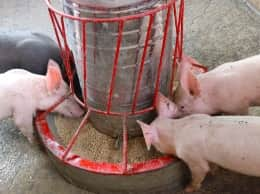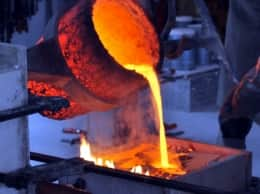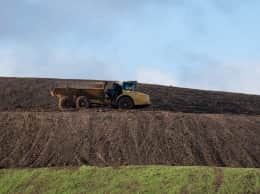Papermaking
Summary of uses
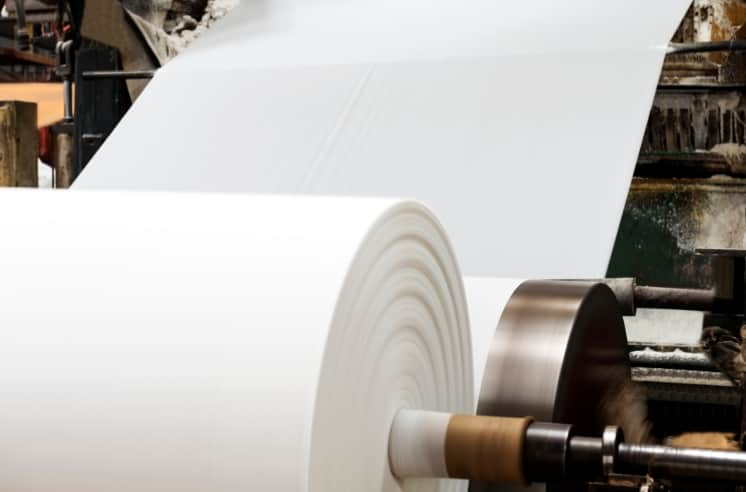
In the paperboard industry, there has recently been a trend toward use of a closed system of white water that does not discharge wastewater from processes because of increasing costs of wastewater treatment. Such a closed system causes accumulation of size, retention aids, adhesive materials, and other dissolved materials in white water, leading to deterioration in water quality.
Deterioration in water quality causes contamination of the systems or requires addition of chemicals in large amounts, which further deteriorates water quality.
By using bentonite in papermaking processes as a pitch control agent or drainage / retention aid, the system can be cleaned up.
Expected effects
By adding bentonite to a pulper or refiner, dirt of the machine or dissolved materials, such as rosin size and starch, which cause pulp water to foam can be adsorbed to the clay. This reduces pitch problems. If bentonite is used in combination with cation PAM in the outlet of a screen, it serves as a coagulant and helps improve ease of drainage and material retention.
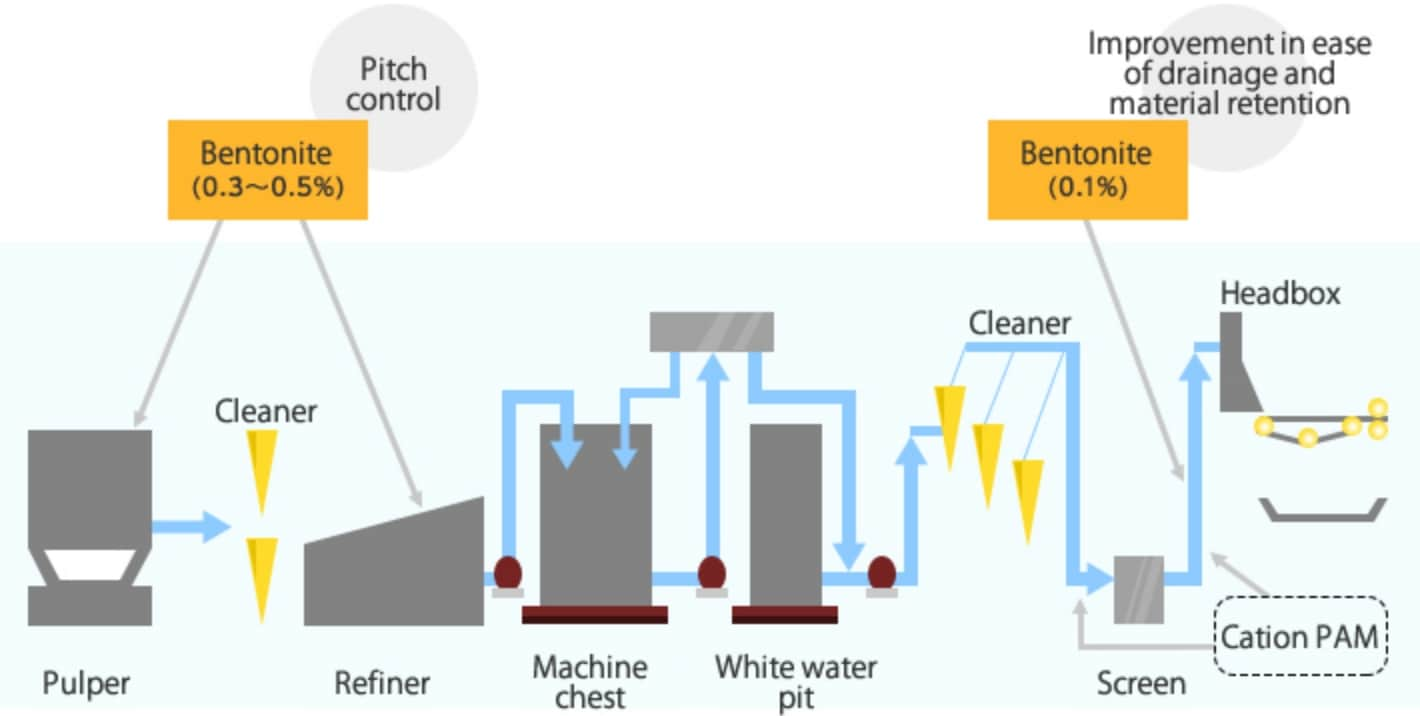
Cleanup system using bentonite for papermaking
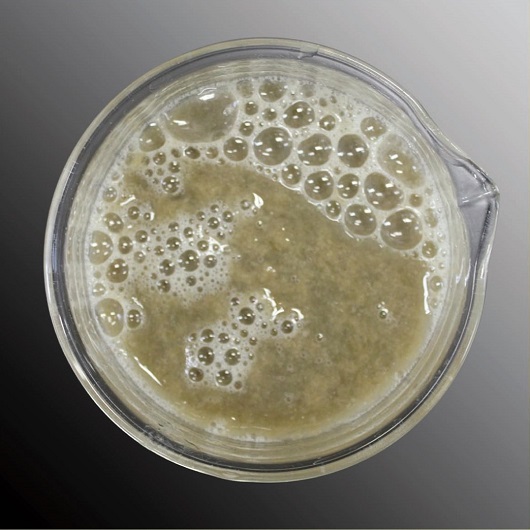
With no bentonite added
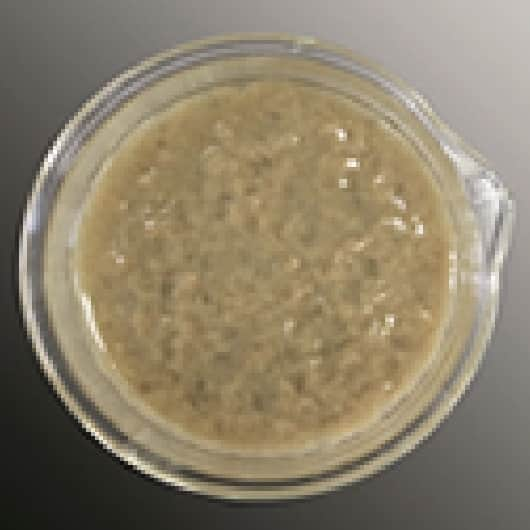
With 0.2% bentonite added
Exmaple effect of bentonite
Bentonite, an inorganic material, adsorbs dissolved materials responsible for pitch problems, and serves as a drainage / retention aid, reducing the amounts of other additives and cleaning up the system.
Product lineup
Bentonite for papermaking is available in powder and concentrated slurry. If you want to use the concentrated slurry, we can provide the product as well as slurry-feeding equipment. Please feel free to contact us for more information.
FAQ
Why does the addition of bentonite improve the filtration yield?
Since the pulp fibers in pulp carry a negative charge, they gather and form flocs when cation PAM carrying a positive charge is added. However, once mechanical shear is added, the formed flocs are temporarily fragmented. If bentonite carrying a negative charge is added in this process, the flocs are mutually crosslinked and re-agglomerated, resulting in an improved filtration yield.

